Explore #1 of the ‘Love Bears’ Tour
Coming up I have a series of reports from the beautiful country of Georgia, which was part of the USSR from 1921 until it regained independence in 1991. I spent a fantastic week in the great company of long-time exploring buddy James Kerwin, as well as Roman Robroek from the Netherlands, and Diego Defilippi from Italy.
I flew out from a cold and rainy Luton airport, landing weary and half-drunk in Kutaisi airport in the West of Georgia just after midnight. I was met by a friendly driver who spoke only russian, but thankfully knew exactly were he was taking me, which was a modest but comfortable soviet-era flat which James had rented from a local contact. After a few hours of fitful sleep it was up at dawn to say a sleepy hello to the rest of the gang, and head out for a full day of exploring the former Soviet-era spa town of Tskaltubo, and its sanatoriums, hotels, bathhouses and more. We ended up cramming so much in that I’ve split my photos over three posts (the other two coming very soon):
Part 1 – Sanatoriums Iveria and Imereti
Part 2 – Hotels Medea, Metallurgy, Tbilisi, and Sakartvelo
Part 3 – Bath Houses #5 and #8, and Tskaltubo Train Station
History (rewritten and abridged from here, here, and here)
The healing powers of the mineral springs of Tskaltubo were reportedly discovered as far back as the 13th century by local shepherds. In 1870 The first bathhouses were opened, and in 1925 under Soviet rule the first sanatoriums (or sanatoria if you prefer) and in-patient facilities were constructed. By 1931 Tskaltubo had been designated as a balneotherapy centre and spa resort, becoming one of Joseph Stalin’s favourite holiday destinations. 19 hotels and sanatoriums were built in a ring around a central park where the thermal springs and 9 bathhouses were located.
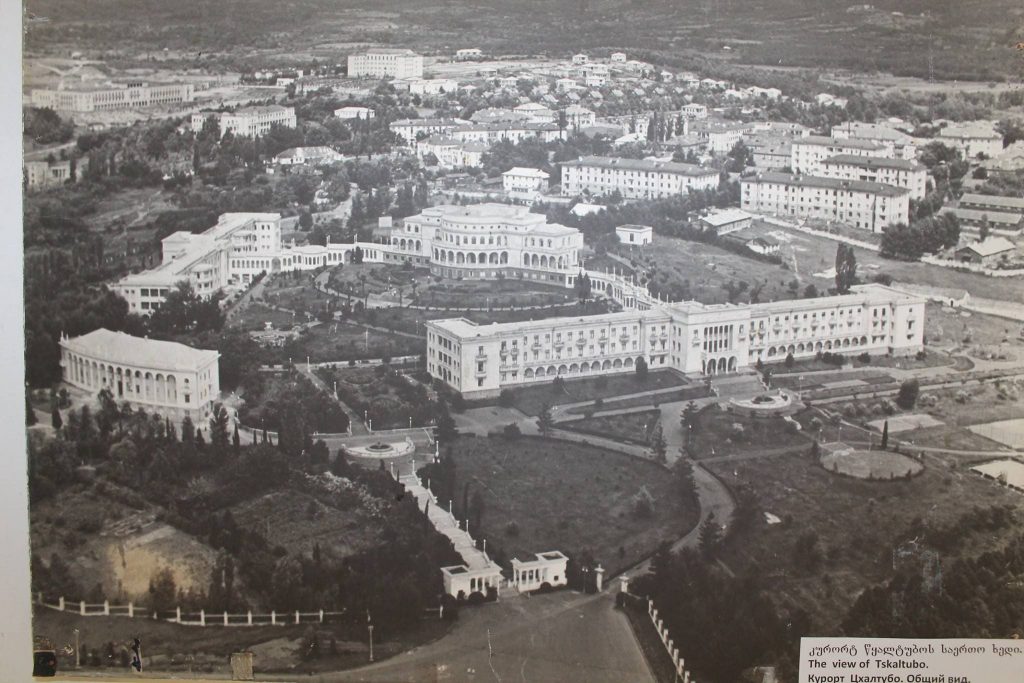
Aerial photograph of Tskaltubo in the 1950s.
During the Second World War the resort’s hotels were used as hospitals, but Tskaltubo’s popularity as a therapeutic and leisure destination peaked during the post-war era. The Russian constitution included a ‘right to rest’, which often meant mandatory orders to recuperate at a spa resort somewhere within the USSR, such as Tskaltubo. At its peak the number of visitors exceeded 1,500 a day and 100,000 a year, with up to 4 trains arriving daily from Moscow and elsewhere in the Union.
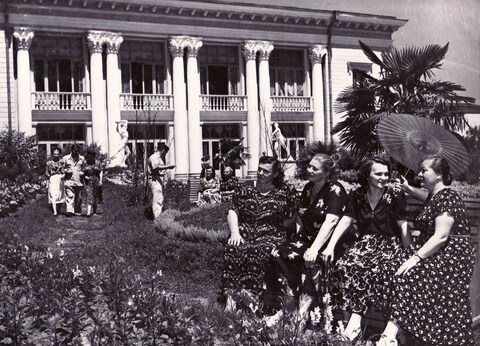
In 1991 Tskaltubo’s spa industry was decimated by the wholesale collapse in visitor numbers which followed Georgia’s declaration of independence in April 1991, and the dissolution of the remainder of the Soviet Union in December of that year. Almost all hotels and sanatoriums were forced into closure, and inevitably fell into decay.
The 1992-1993 war in the nearby Russian-backed breakaway state of Abkhazia resulted in over 200,000 predominantly ethnic Georgians fleeing that region to Georgia, where they were offered shelter as ‘Internally Displaced Persons’ or IDPs. It is estimated that around 8,000-9,000 of the refugees were offered “temporary” accommodation in the deserted hotels and sanatoriums of Tskaltubo. But over a quarter of a century later, many of those families still live within the buildings’ crumbling sprawl, often without running water, a scarce and sporadic electricity supply, and cooking facilities mostly limited to a solitary portable gas burner.
Whilst the future of Tskaltubo and its residents is still uncertain, there have finally been some seemingly positive developments in the past few years. Ambitious plans have been drawn up, seeking investment and renovation. Several sanatoriums, including Iveria, have recently been purchased and some redevelopment has started. Just how successful these new enterprises are, and how they ultimately affect the local population, remains to be seen.
Our Explore
Before I go any further, given the troubled history I have outlined above, I would like to make clear that our group were at pains to make sure that during our visit to Tskaltubo we were quiet and respectful to all local residents, including the IDPs still living in some of the buildings. We kept only to the parts which were completely abandoned, but exchanged many waves and smiles with those locals we did encounter along our way. One highlight of the day was showing some curious residents the screen with the live feed from my drone as it soared high above the derelict sanatorium that some of them called home – this resulted in much laughter, smiles and hand shakes all round. This was typical of my experience throughout my time in Georgia – a people who might at first sight appear somewhat stern or taciturn, but who were quick to burst into broad smiles when given a friendly “hello”, and incredibly warm and generous in their hospitality. In fact too much so when it came to homemade moonshine wine, but that’s a story for a later post!
Sanatorium Iveria
We were lucky to get to pay a brief visit to this former sanatorium, as it has recently been purchased by a developer and had a guard stationed outside. The main draw was the beautiful central staircase, featuring a large hole on either level – presumably once protected by bannisters which have long since been removed and used for firewood.
…and another edit of the same shot, this time with the white balance tweaked, and my attempts to remove most of the graffiti…
Sanatorium Imereti
Our second sanatorium was this vast beauty, which still has a few IDPs living in one part. I began by taking a few drone shots – looking back, something which I’d done with more of the buildings we visited, but we crammed so many locations in to just one day I really didn’t have time.
I believe the circular building is the former bath house part of the spa.
…and just for fun, here’s a more “haunting” edit! 🙂
Just before I landed, I flew over to a neighbouring apartment block to grab a shot of these colourful balconies.
Back on the ground, we began our explore on foot…
This is the inside of the circular bathhouse(?) seen in the drone shots above…
Looking across to the circular building from one of the main wings…
The sanatorium also featured several striking staircases…
I hope you’ve enjoyed my first post from this fascinating town – parts two and three coming up in the next week or so. If you haven’t already done so, please consider subscribing to this blog, and you’ll receive email notifications whenever I publish something new.
Stay healthy, Comrades.
Adam X


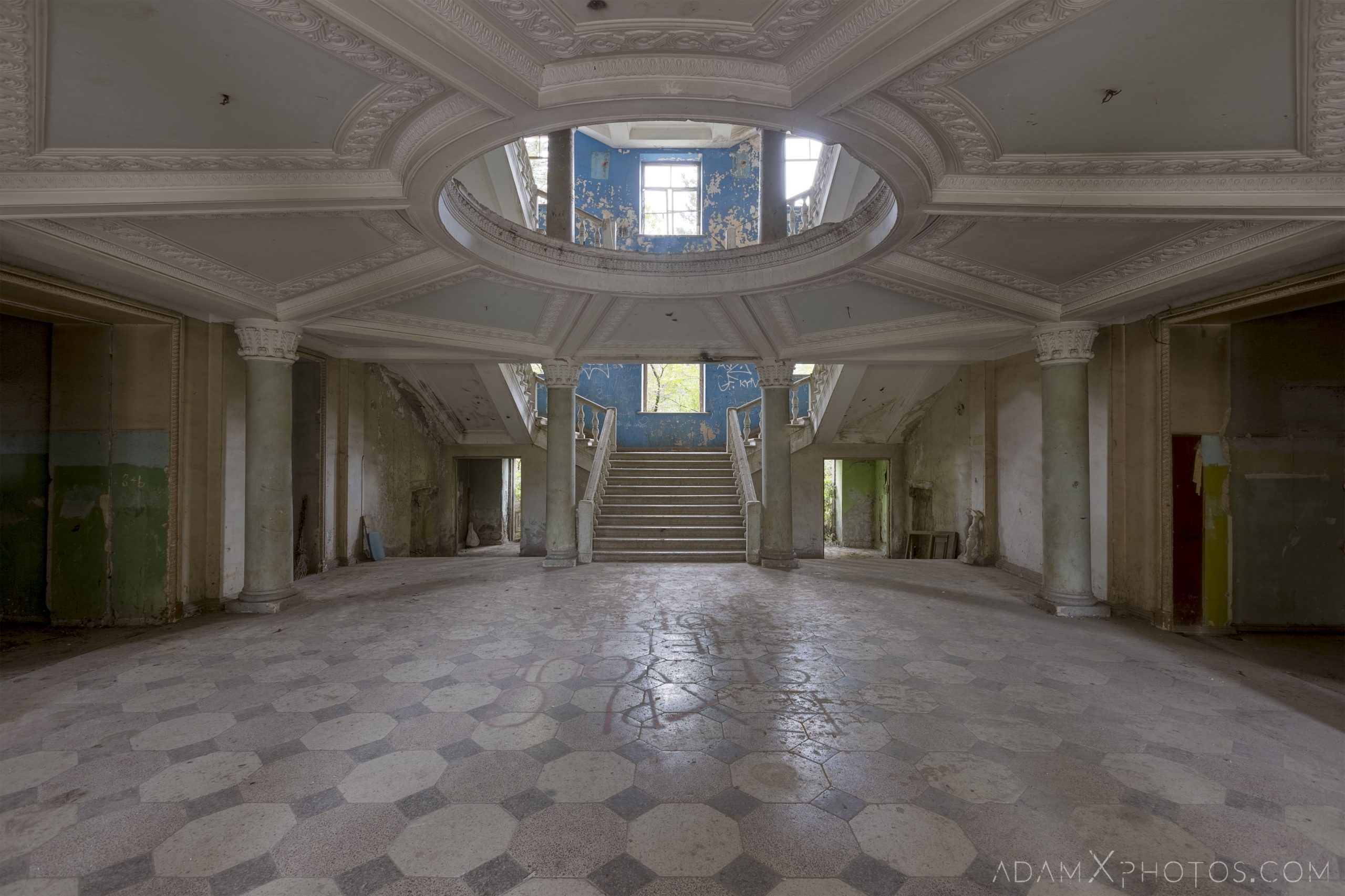

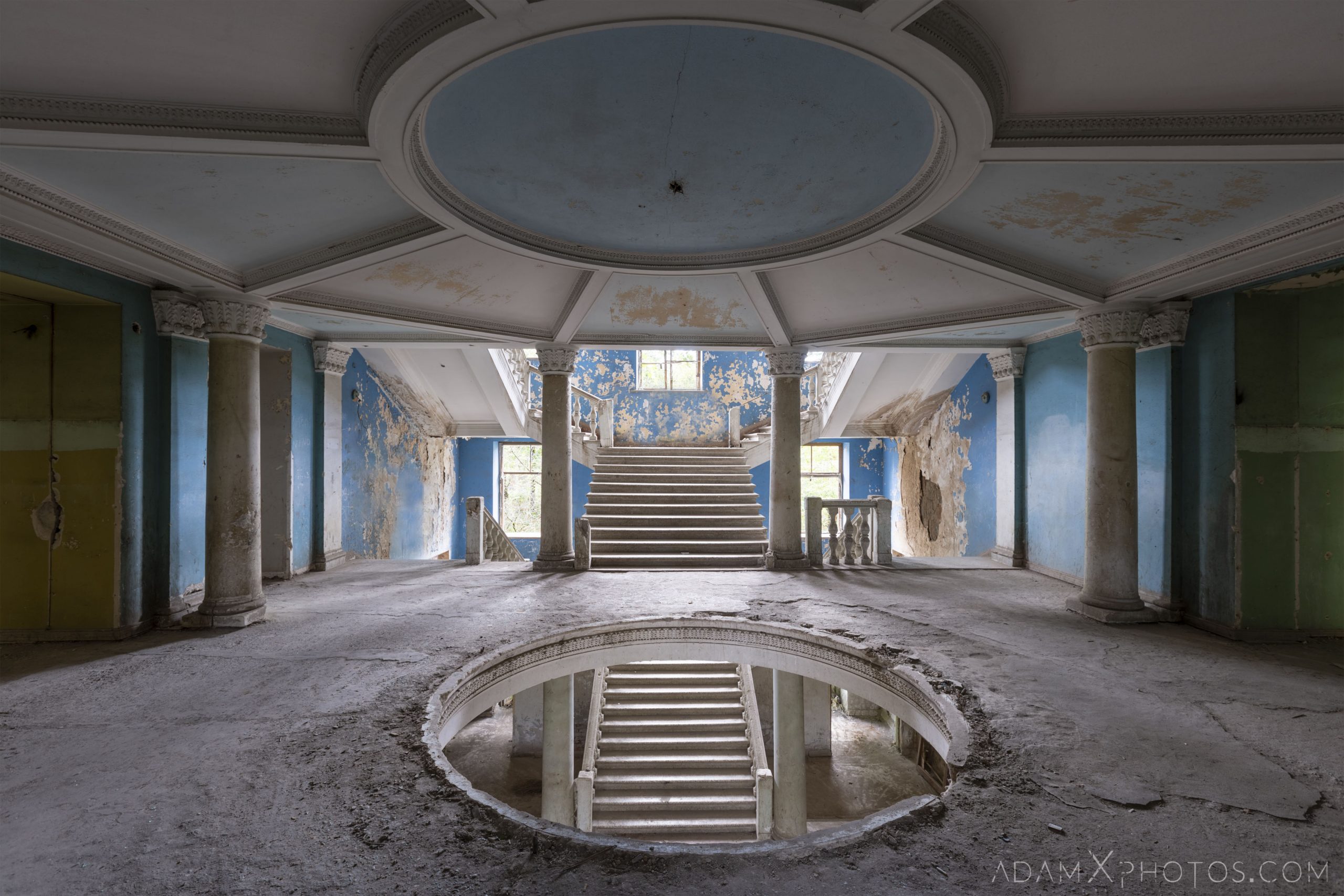
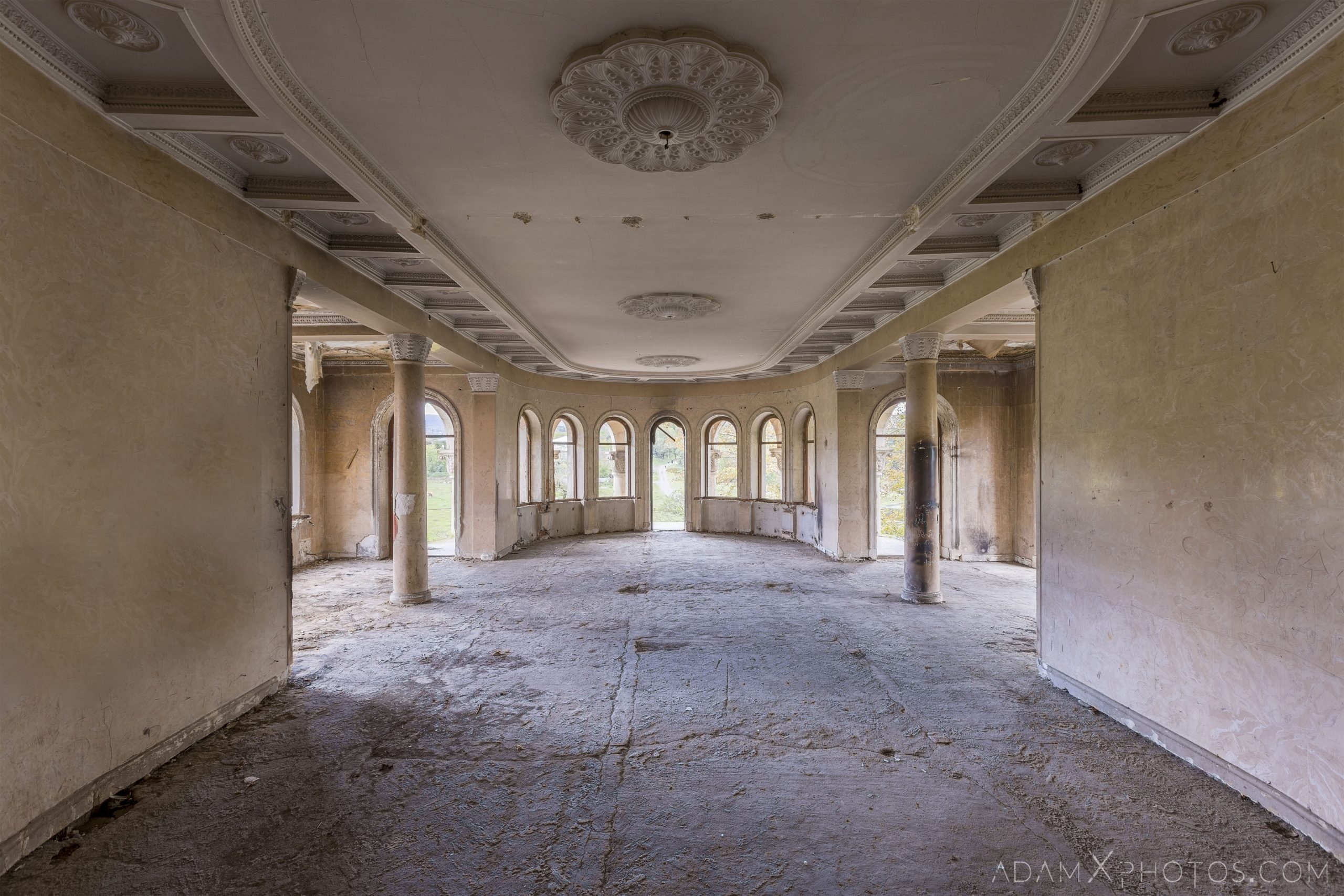

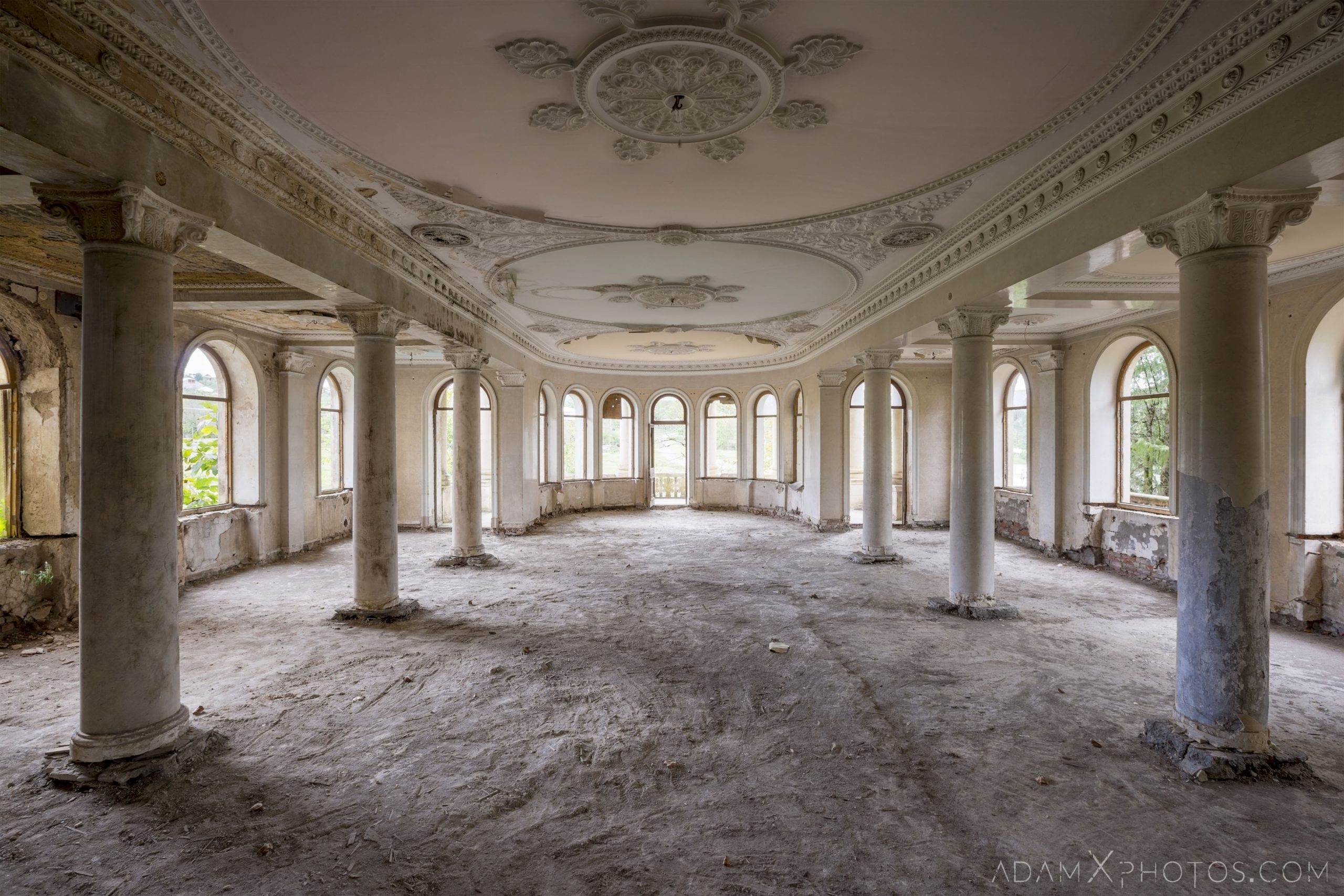


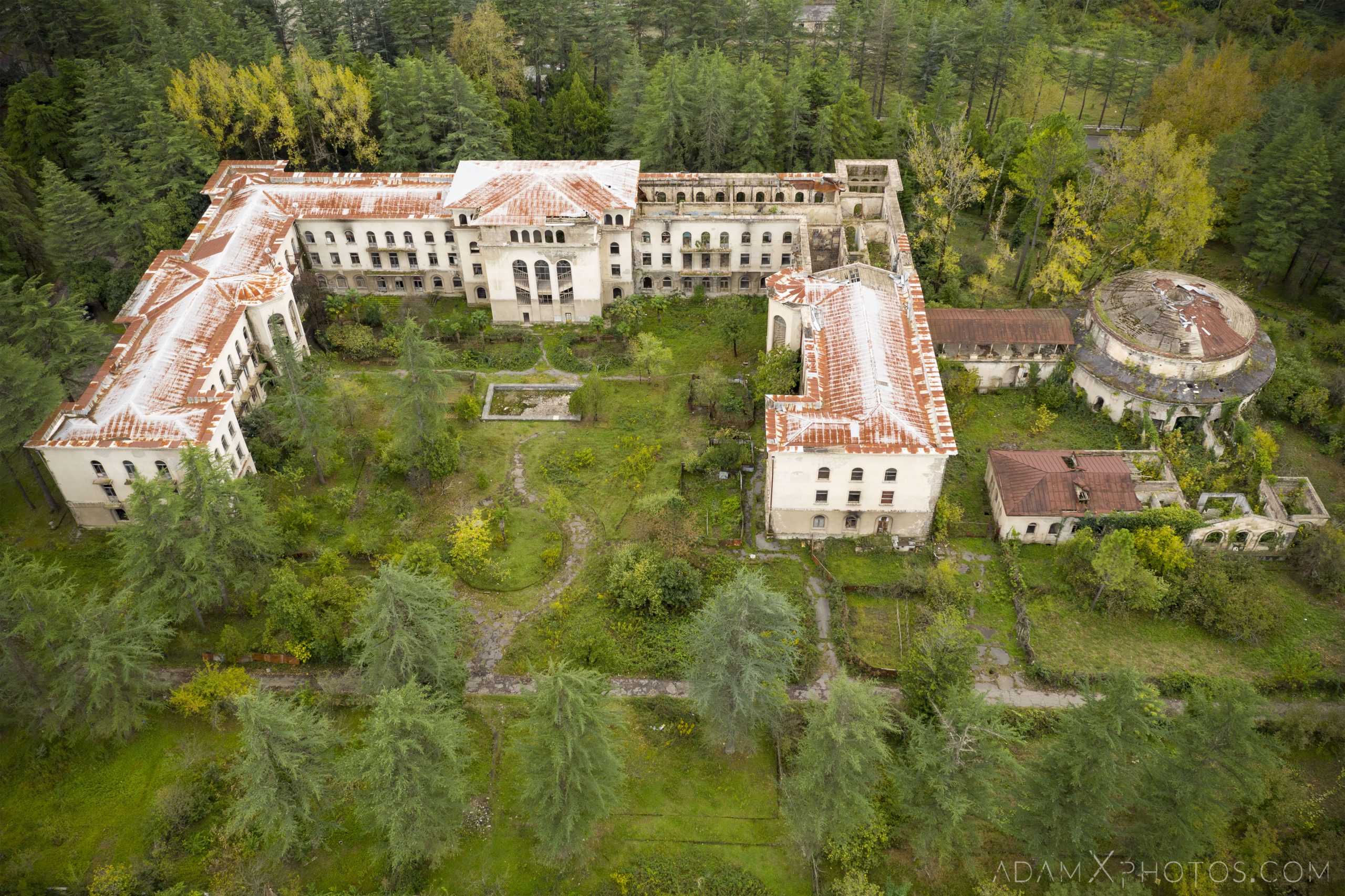
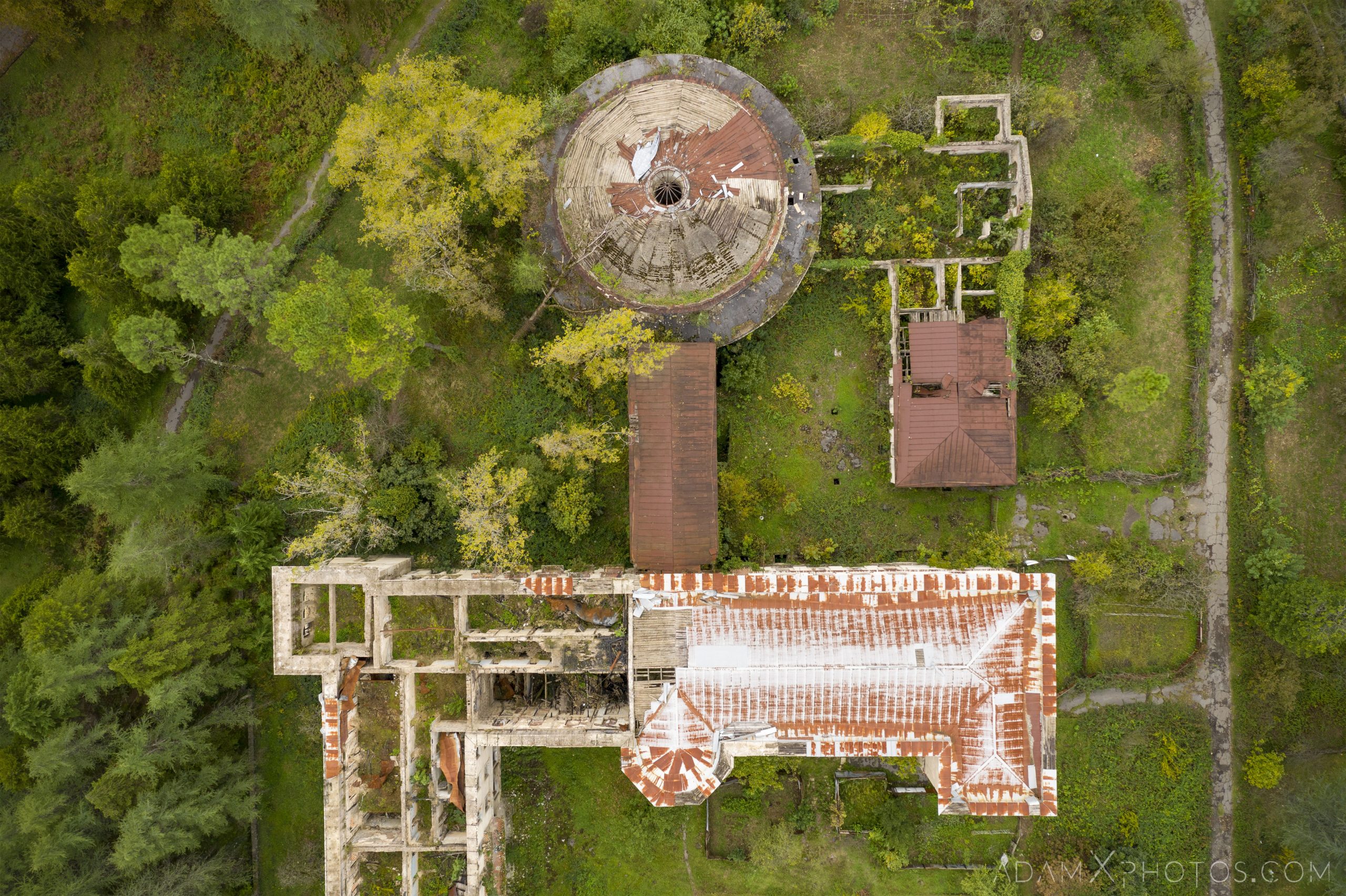
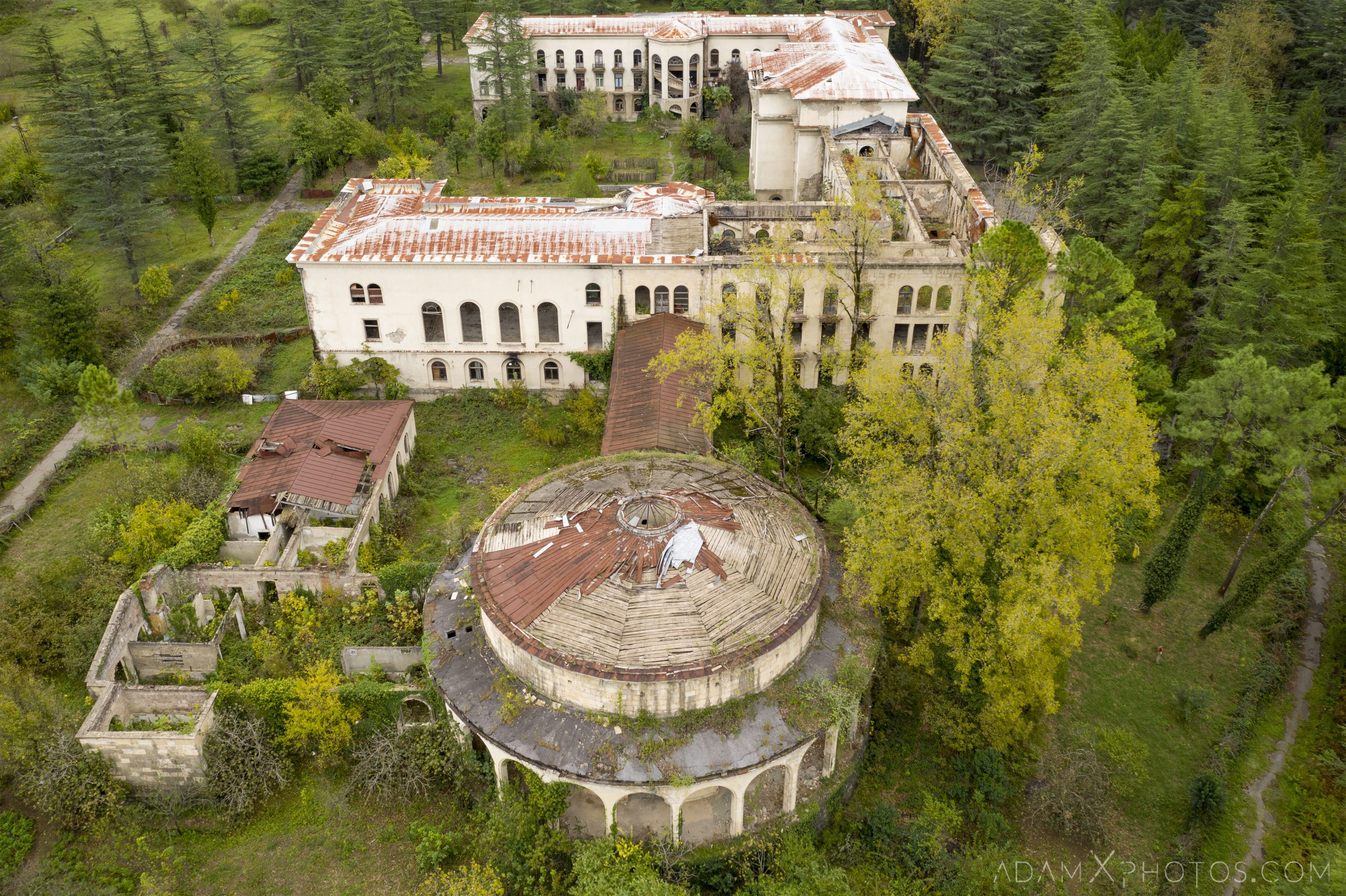
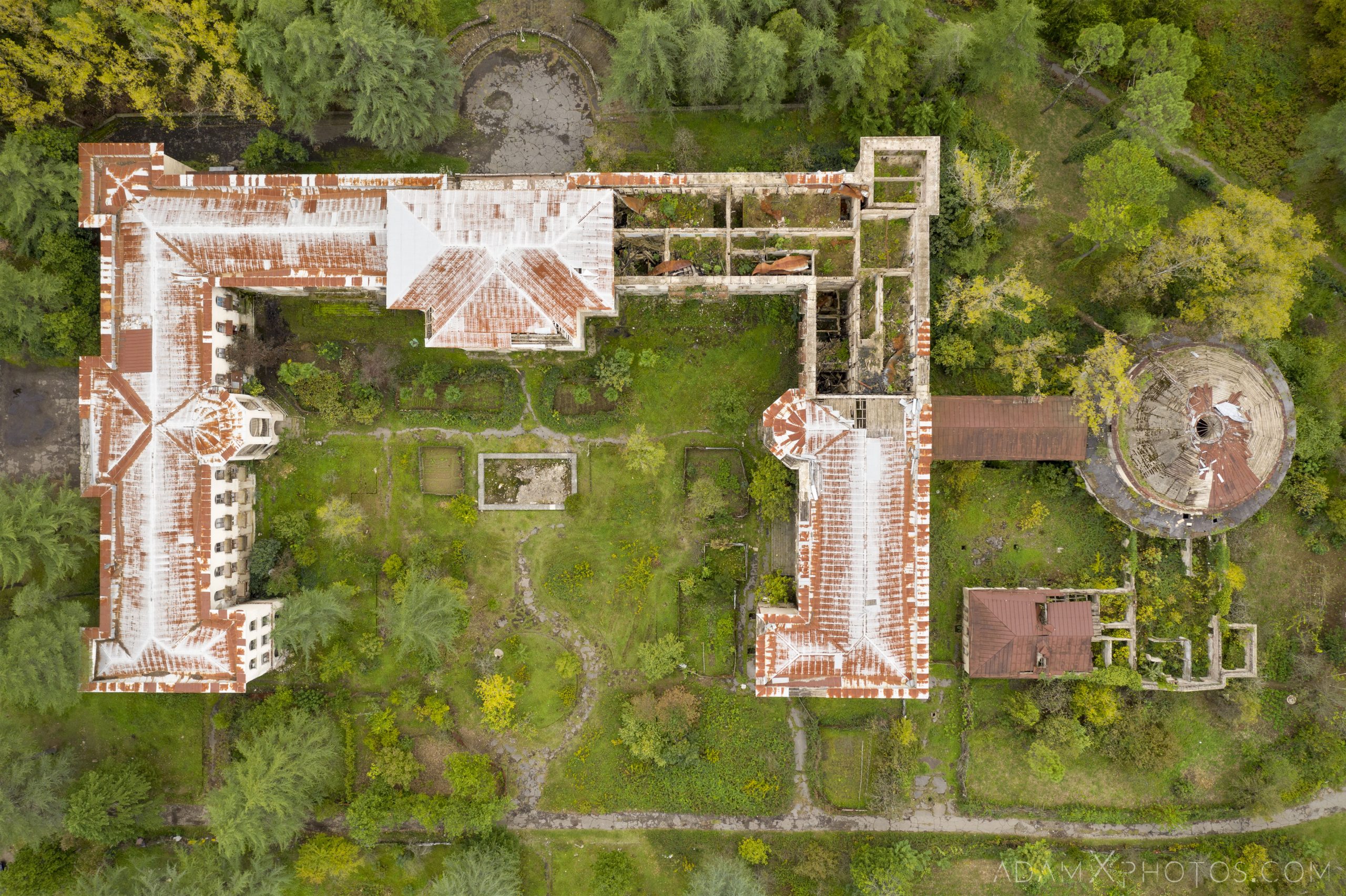
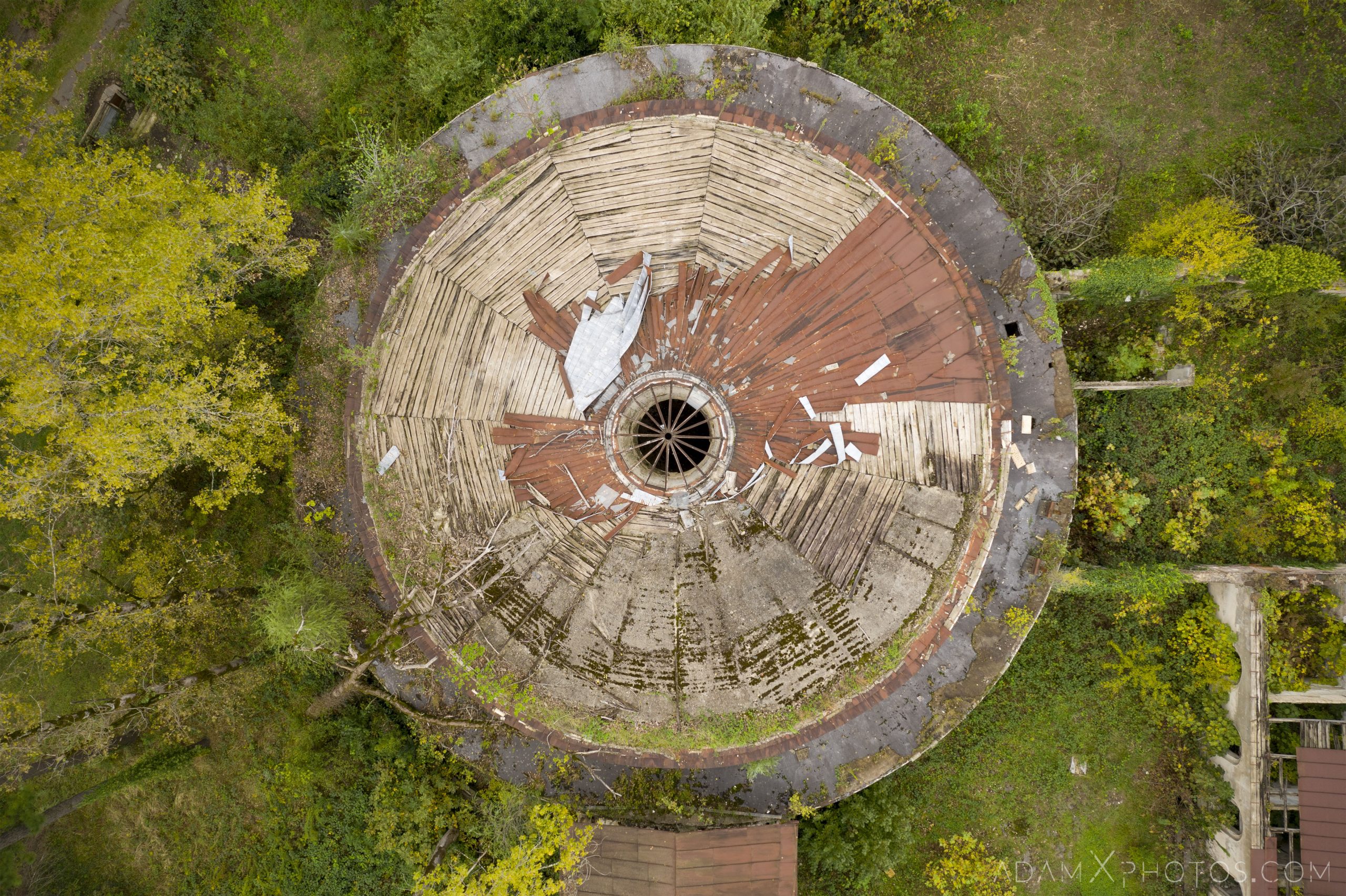
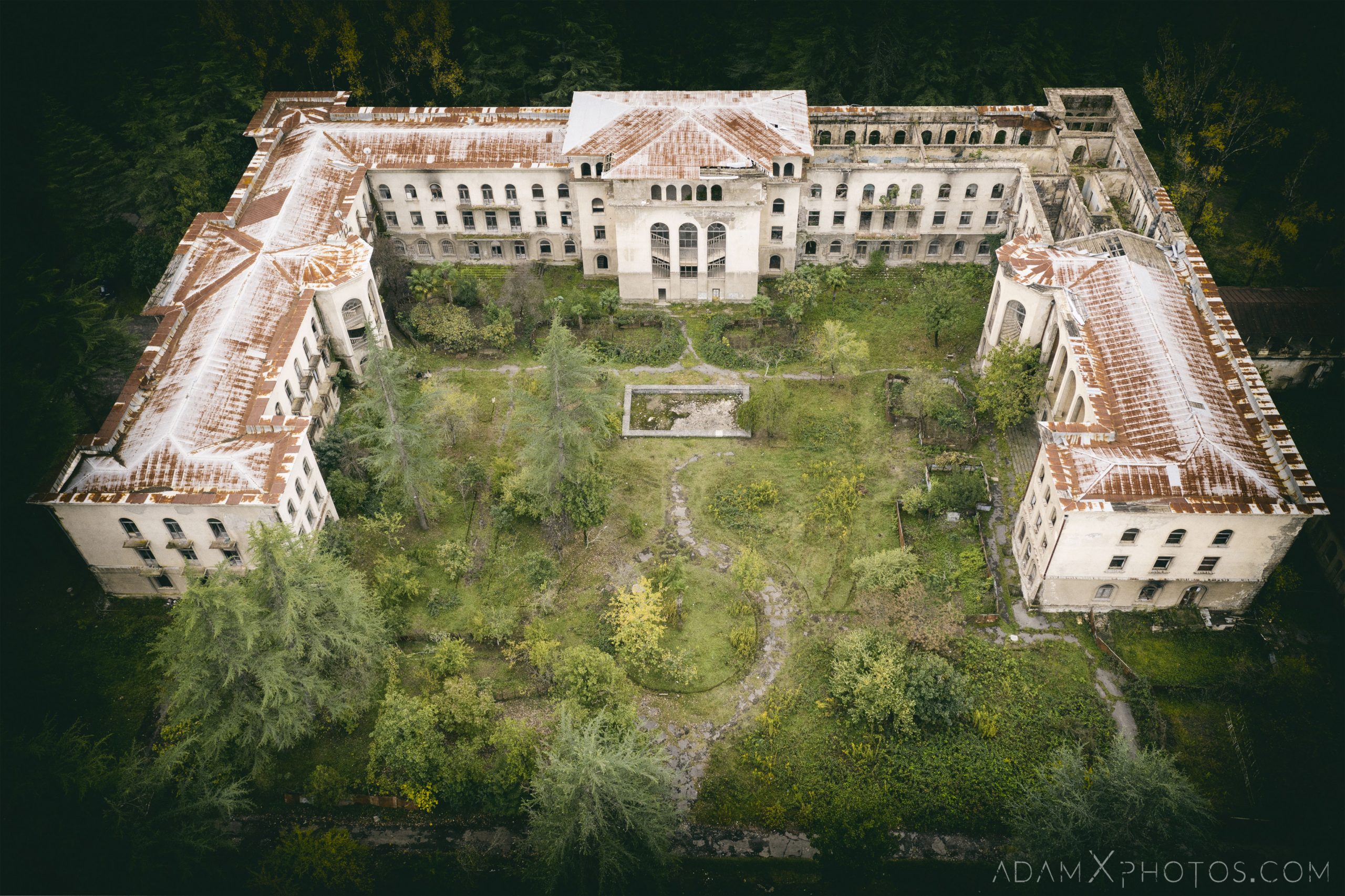
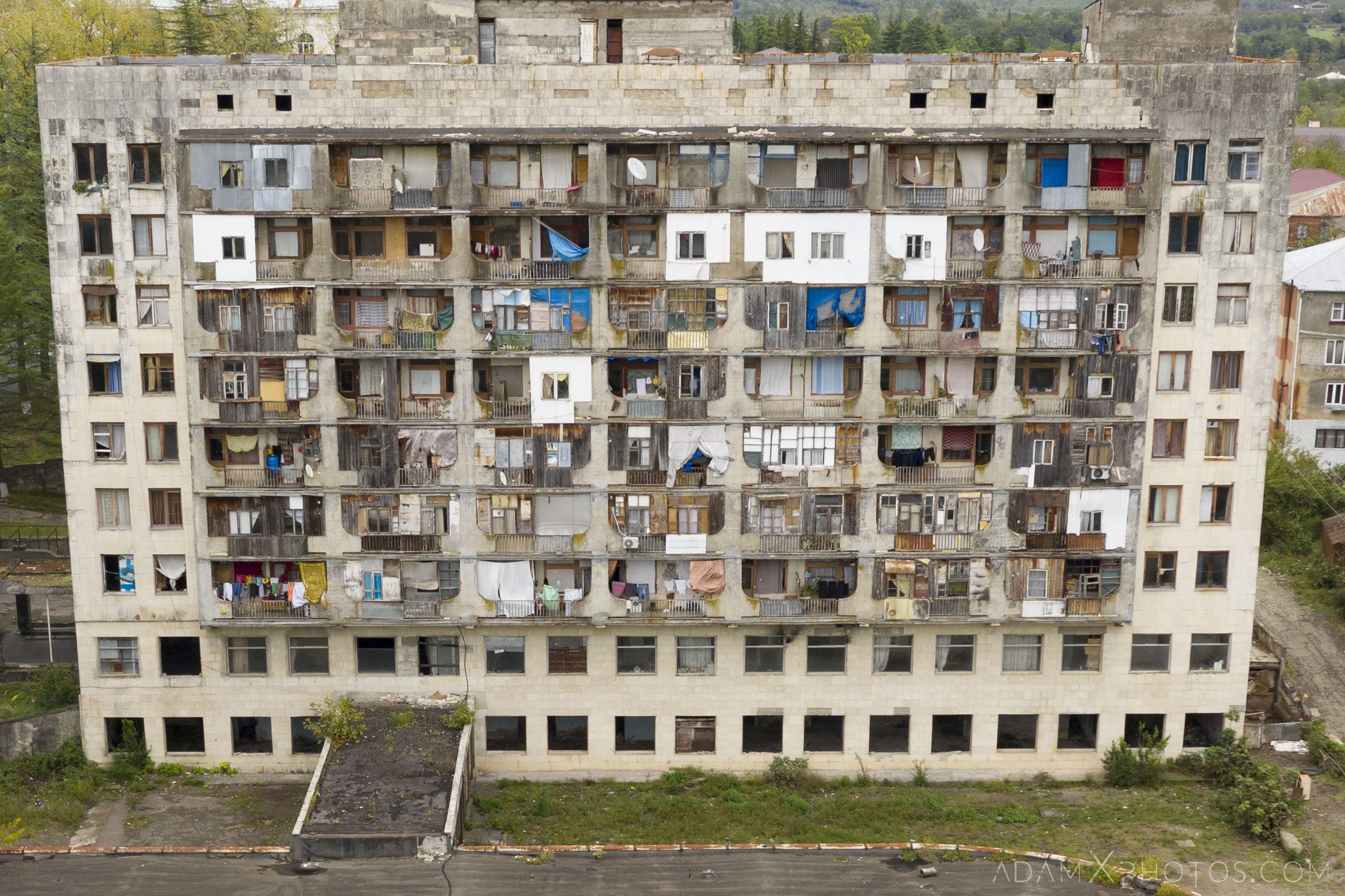
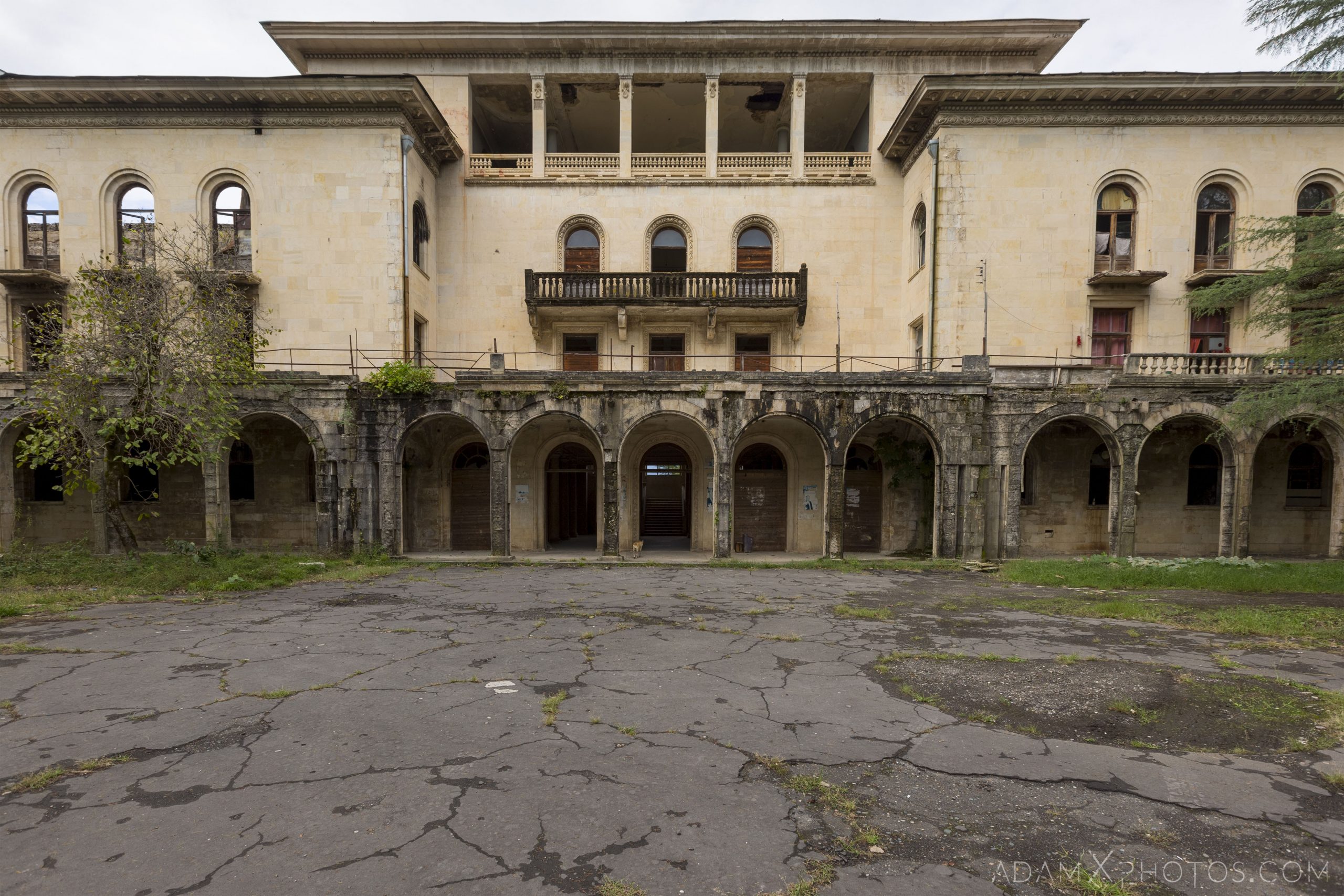
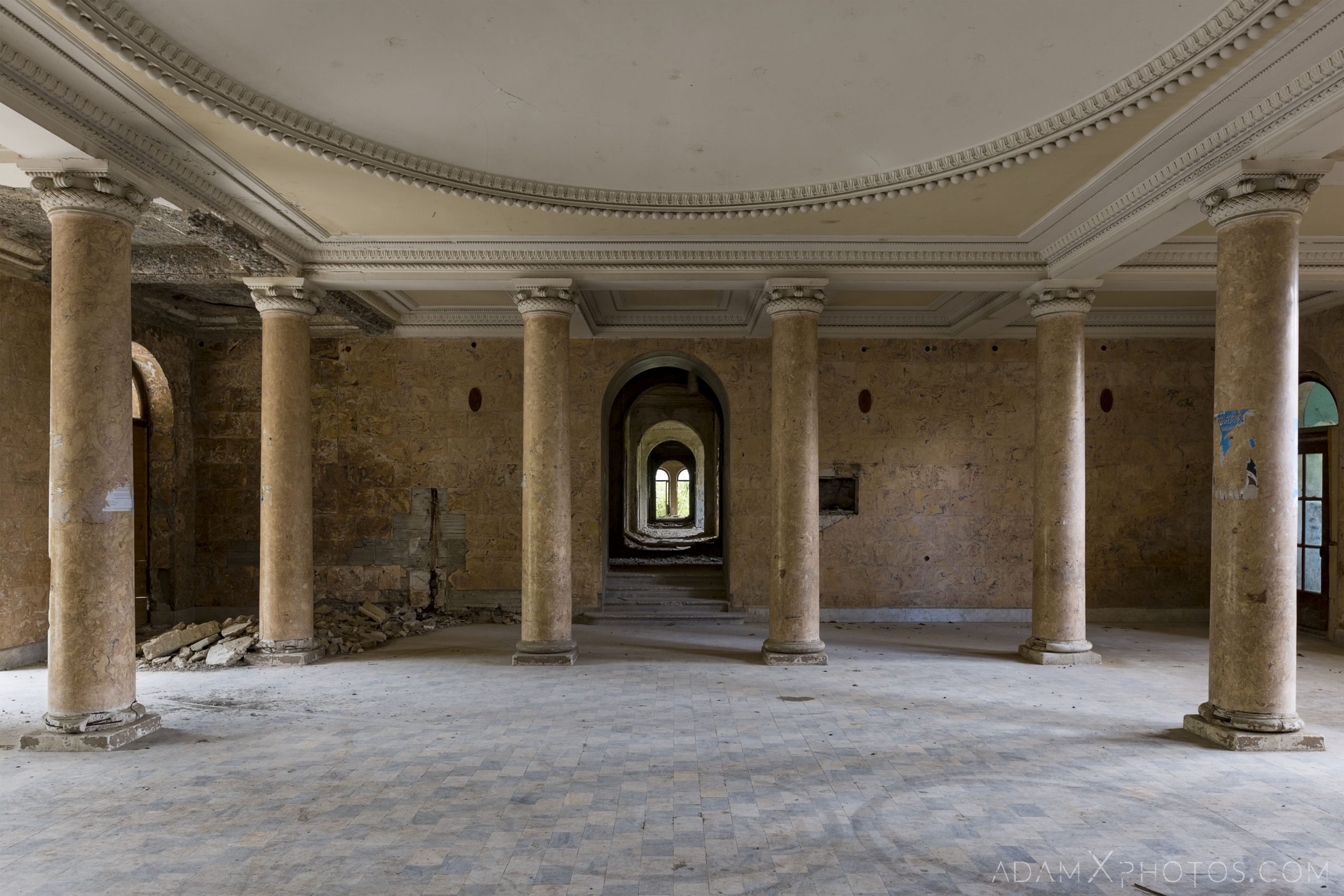



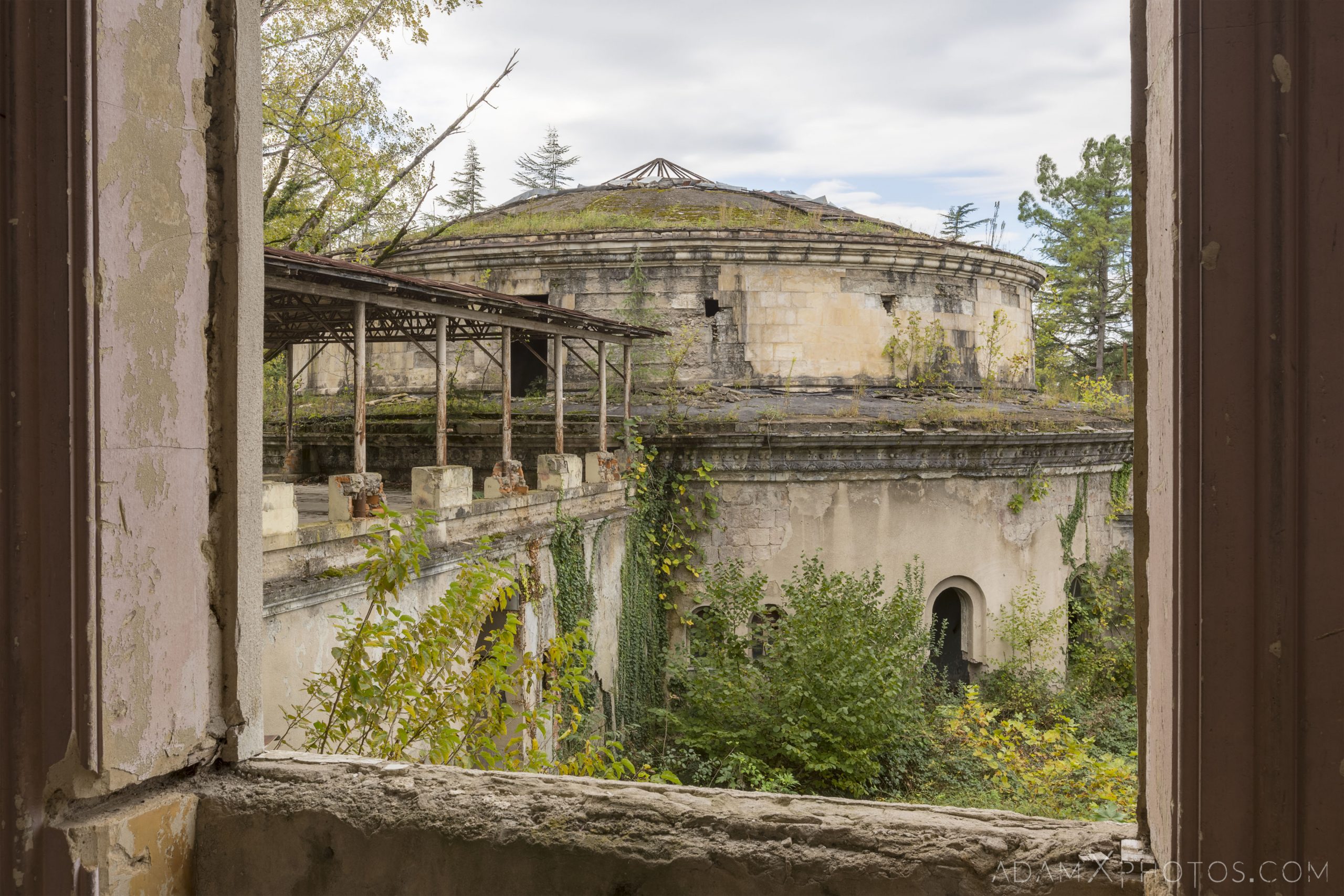
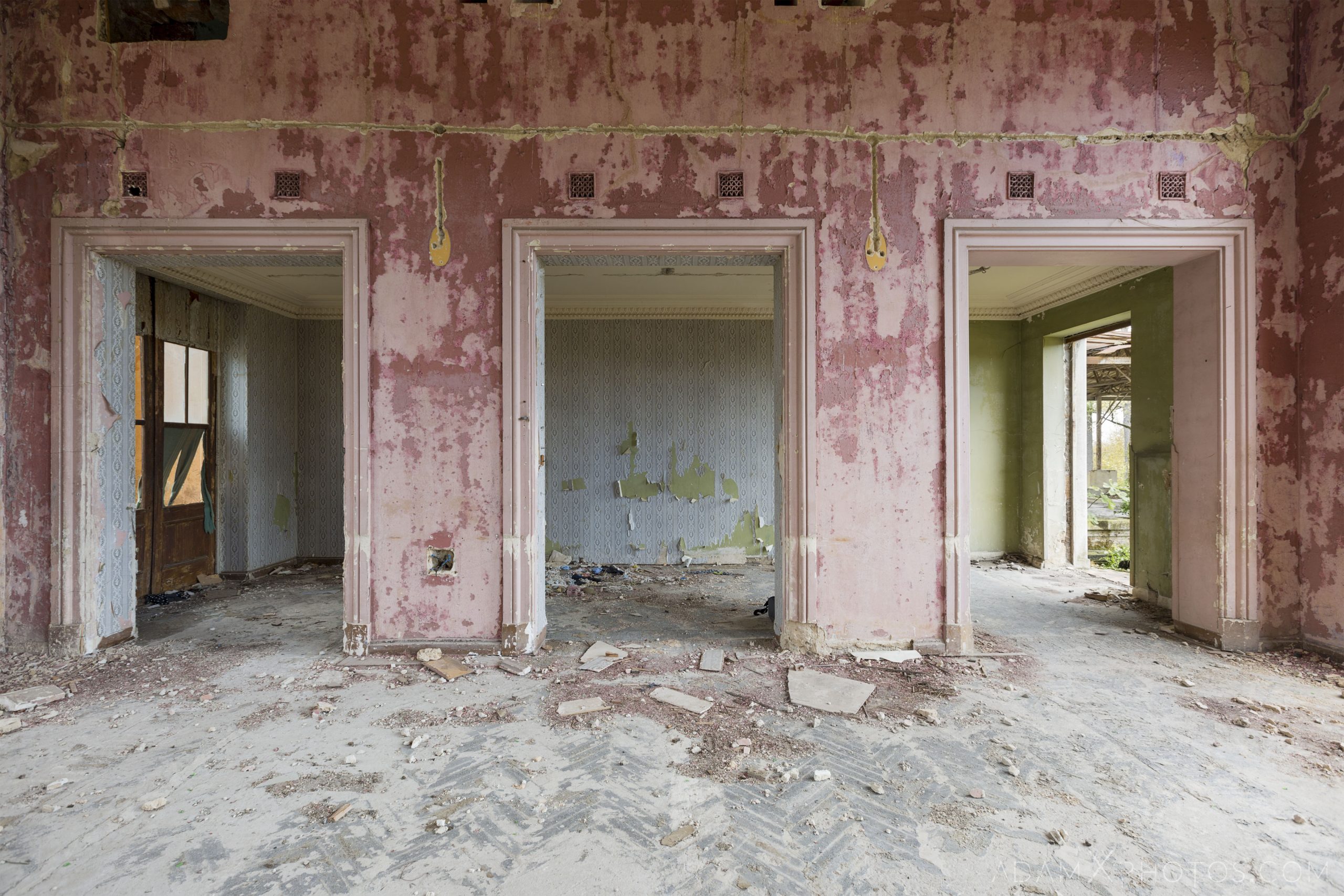
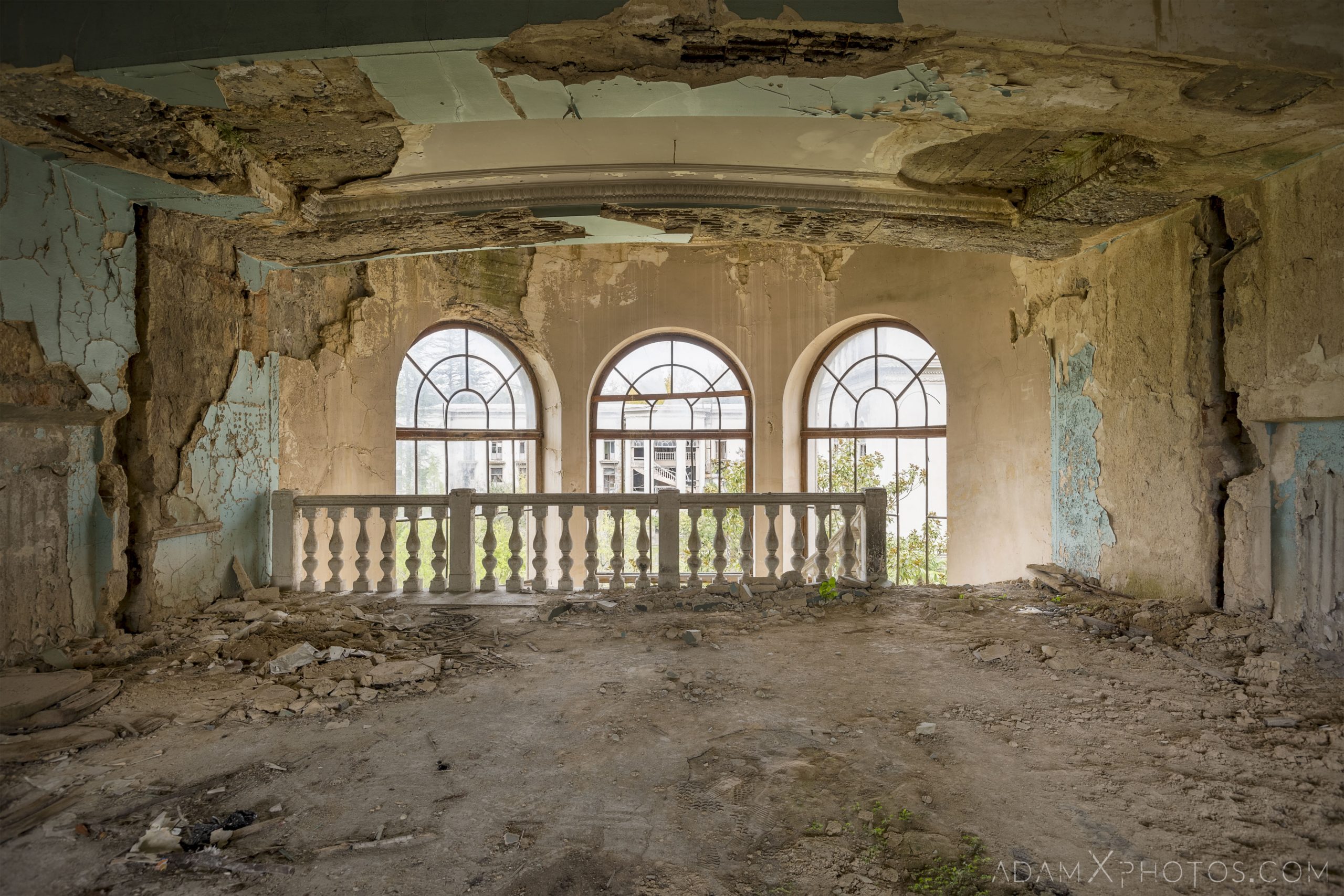



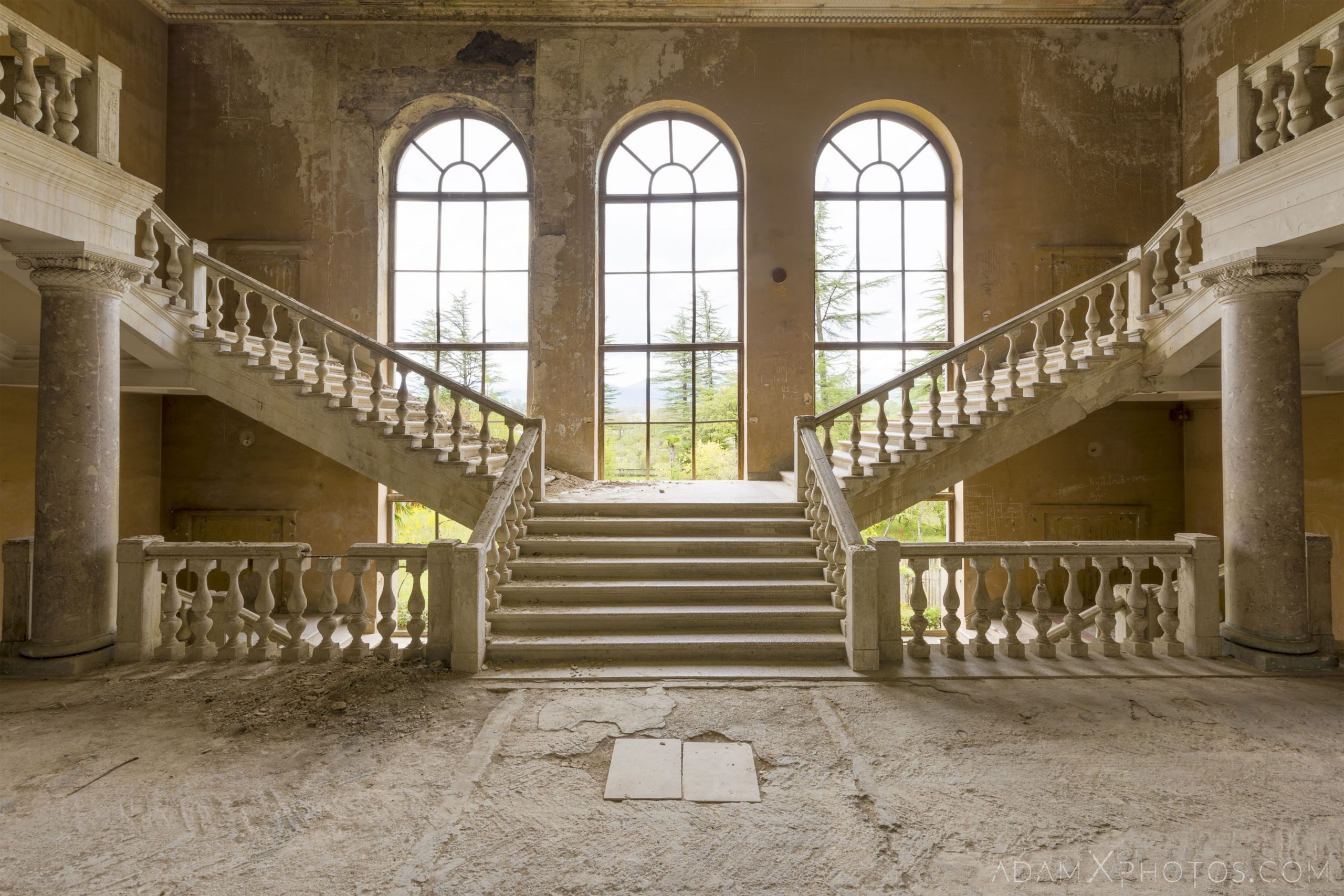

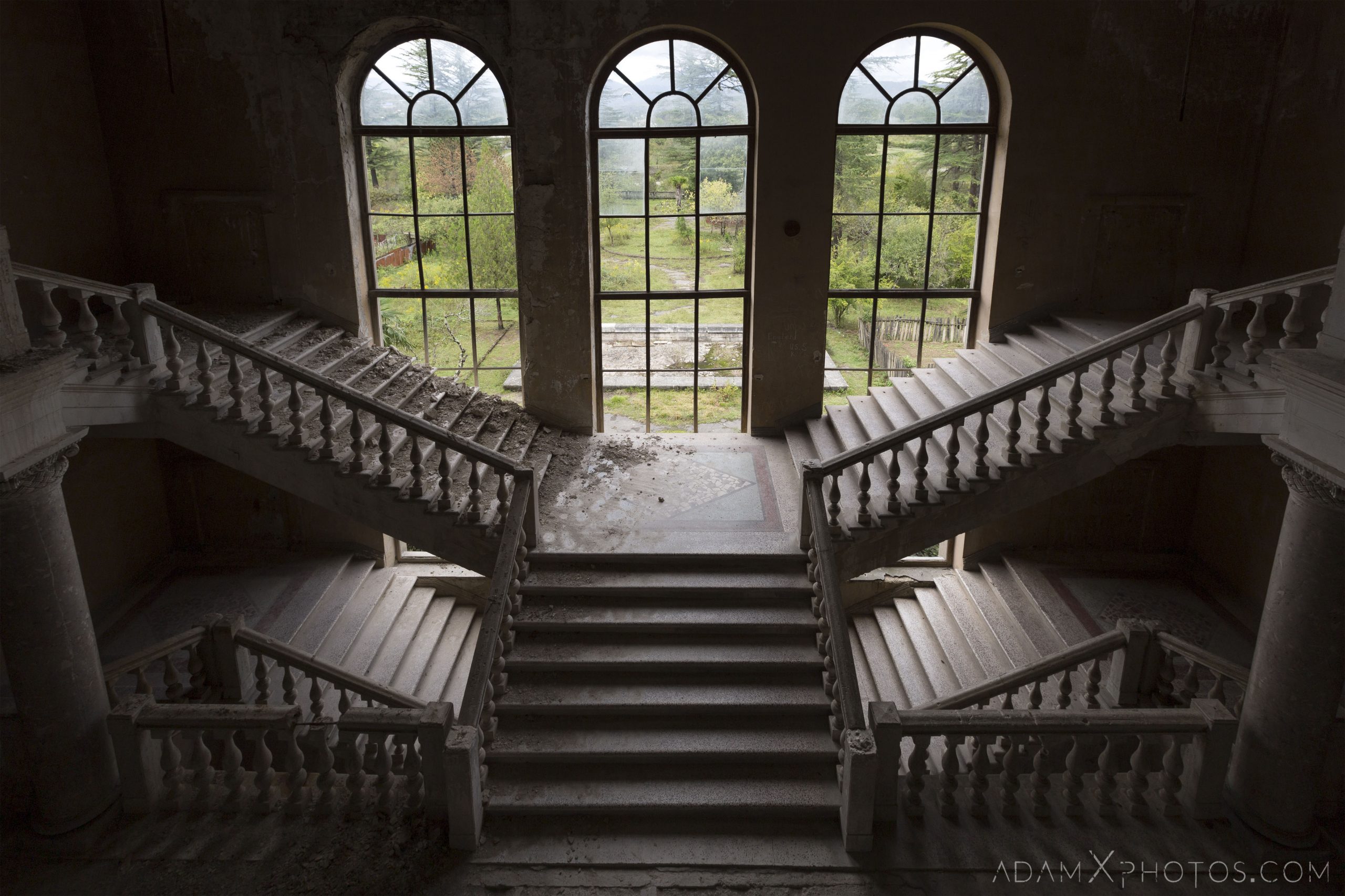
One comment